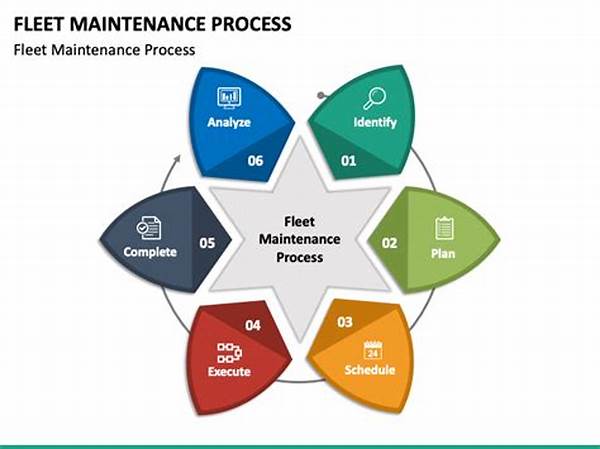
Best Practices For Fleet Upkeep
In the intricate world of transportation and logistics, maintaining an efficient fleet is not just a possibility—it’s a necessity. To maximize productivity, cut costs, and ensure safety, a well-executed fleet maintenance strategy must be at the forefront of any business operation. These best practices for fleet upkeep not only enhance vehicle longevity but also contribute to a company’s bottom line, tightening operational budgets, and elevating standards. Navigating the road to effective fleet maintenance requires a commitment to structured processes and a keen attention to detail. Embrace these strategies not just as recommendations, but as fundamental aspects of a thriving business in today’s competitive environment.
Preventative Maintenance Saves Money
The adoption of a regular preventative maintenance schedule is one of the best practices for fleet upkeep. This proactive approach focuses on routine check-ups and addressing potential issues before they escalate into serious problems. By conducting regular inspections, from oil changes to brake checks, fleet managers can avoid costly emergency repairs down the line. Moreover, preventative maintenance prolongs vehicle lifespan, which in turn protects the company’s investment and supports budget allocation across other areas. A commitment to routinely scheduled maintenance also ensures compliance with safety regulations, minimizing the risk of accidents and the associated liabilities. Therefore, creating a culture of regular maintenance isn’t just good practice; it translates into tangible financial benefits for any business.
Efficient Use of Technology
1. Utilizing fleet management software is a cornerstone in the best practices for fleet upkeep, allowing managers to track vehicle performance, schedule maintenance, and predict potential mechanical failures.
2. GPS tracking technologies improve route efficiency, decrease fuel consumption, and extend vehicle life as a part of the best practices for fleet upkeep.
3. Diagnostic tools provide real-time data, enabling immediate action on aerial issues, which aligns with the best practices for fleet upkeep.
4. Automated alerts facilitate timely maintenance reminders, ensuring no inspections are missed when adhering to the best practices for fleet upkeep.
5. Integrating AI and machine learning refines predictive maintenance, a modern touch to traditional best practices for fleet upkeep.
Training and Development of Fleet Personnel
Central to the best practices for fleet upkeep is the training and development of competent personnel. Skilled technicians and well-informed drivers are essential assets in maintaining vehicle standards and operational efficacy. Regular training workshops equip the fleet team with up-to-date knowledge on the latest automotive technologies and repair techniques. Additionally, safety training ensures that drivers adhere to traffic regulations, reduce risk of accidents, and leverage fuel-efficient driving habits. Promoting a culture of constant learning not only enhances the fleet’s reliability but also boosts morale, increasing job satisfaction among employees. By investing in the workforce, businesses can secure their fleets’ longevity and performance.
Enhancing fleet personnel’s skillsets establishes a chain reaction throughout the organization. Technicians who are thoroughly trained on maintenance procedures promote safety and proficiency. Meanwhile, knowledgeable drivers who understand the nuances of fleet operations are integral in implementing the best practices for fleet upkeep across the board. Through collective efforts, effective communication, and continuous education, a company can elevate its fleet management to new levels of excellence.
Environmental Considerations
Incorporating environmental consciousness into fleet operations is among the best practices for fleet upkeep. Selecting eco-friendly vehicles and implementing fuel-efficient driving protocols reduces carbon footprints and aligns with global sustainability goals. Fleet managers should explore opportunities to minimize waste by recycling materials and components during maintenance. An environmentally responsible approach not only addresses modern ecological demands but also often results in cost savings through improved fuel efficiencies and reduced emissions. Businesses that champion sustainability practices can enhance their reputations and cultivate a positive public image, fostering trust and loyalty among clients.
Emphasizing sustainability within fleet maintenance strategies reflects the broader societal shift towards greener practices. Innovative technologies like electric or hybrid vehicles and alternative fuels contribute to a reduction in harmful emissions without compromising performance. These advancements highlight the importance of combining traditional best practices for fleet upkeep with contemporary eco-friendly solutions, ensuring enterprises remain at the forefront of industry progress.
Challenges and Solutions
Overcoming Common Maintenance Obstacles
Even with the best practices for fleet upkeep, challenges are inevitable. Vehicle downtime, unforeseen repairs, and fluctuating fuel costs can pose significant threats to operations. However, with a structured approach, these obstacles can be minimized. Embracing thorough records management is one solution—diligently tracking vehicle histories to anticipate maintenance needs. This preemptive tactic, coupled with regular fleet assessments, optimizes the scheduling of repairs and upgrades. Moreover, developing a comprehensive contingency plan equips organizations to handle unexpected issues swiftly and efficiently.
The implementation of strategic partnerships is another robust solution within the best practices for fleet upkeep. Collaborating with reliable suppliers and service providers ensures that quality materials and expert services are accessible. Building strong relationships with trustworthy vendors fosters competitive pricing and guarantees timely service delivery. Additionally, creating an open dialogue with suppliers can result in tailored solutions that fit an organization’s unique requirements, further enhancing efficiency.
Monitoring and Continuous Improvement
Continuous monitoring and improvement are intrinsic to the best practices for fleet upkeep. By employing data analytics and performance metrics, fleet managers can dissect operational trends to identify areas for enhancement. Establishing clear benchmarks allows for the evaluation of maintenance strategies, ensuring objectives are met consistently. Regularly reviewing these metrics and adjusting tactics accordingly fosters a dynamic environment that champions innovation and adaptability. Furthermore, incorporating feedback from drivers and technicians into these evaluations can offer valuable insights, driving continual improvement and operational excellence.
In conclusion, adhering to the best practices for fleet upkeep requires a multifaceted commitment to innovation, training, sustainability, and collaboration. A strategic approach ensures not only the operational efficiency and safety of a fleet but also fortifies a business’s competitive standing in the logistics and transportation industry.